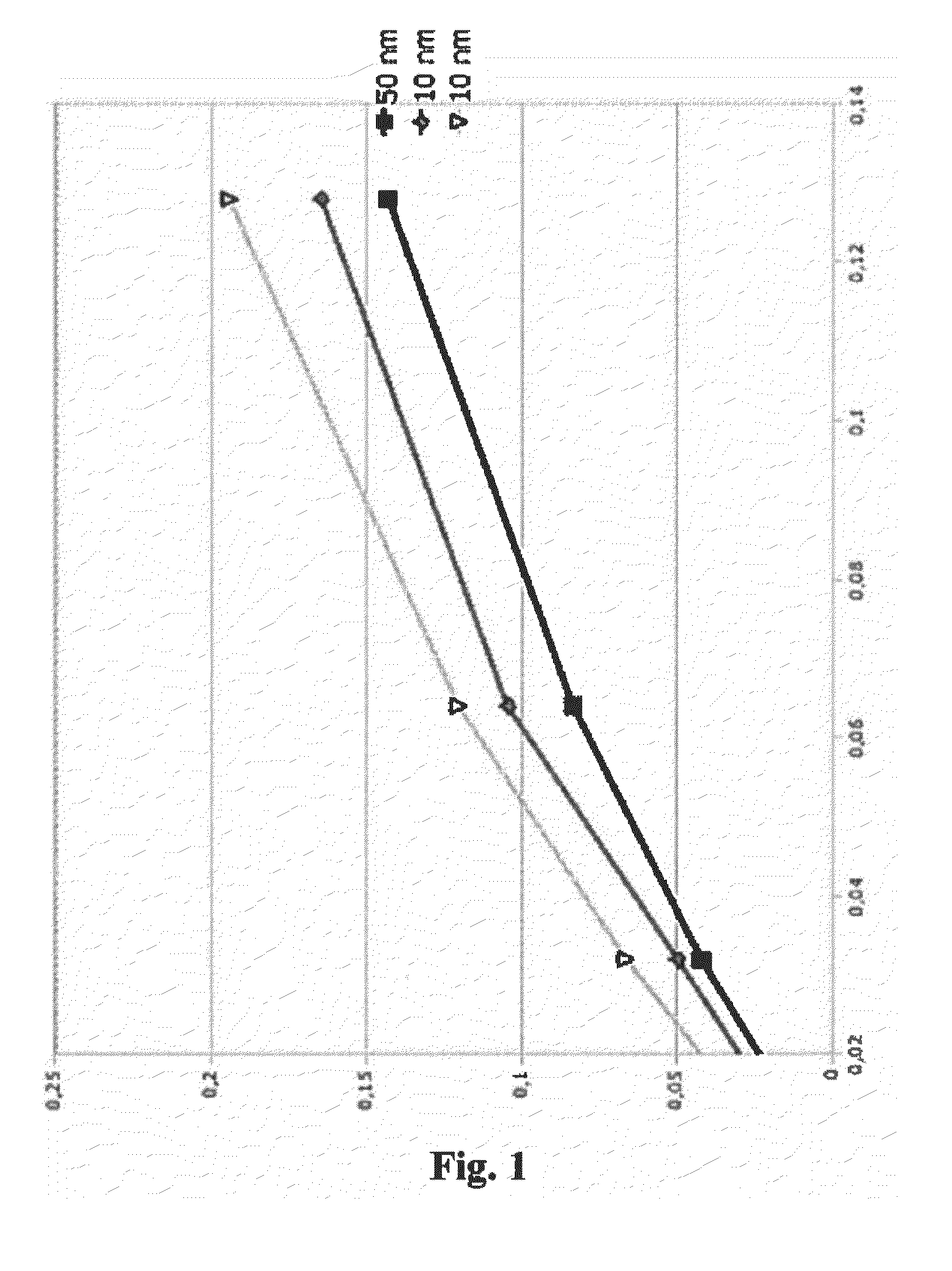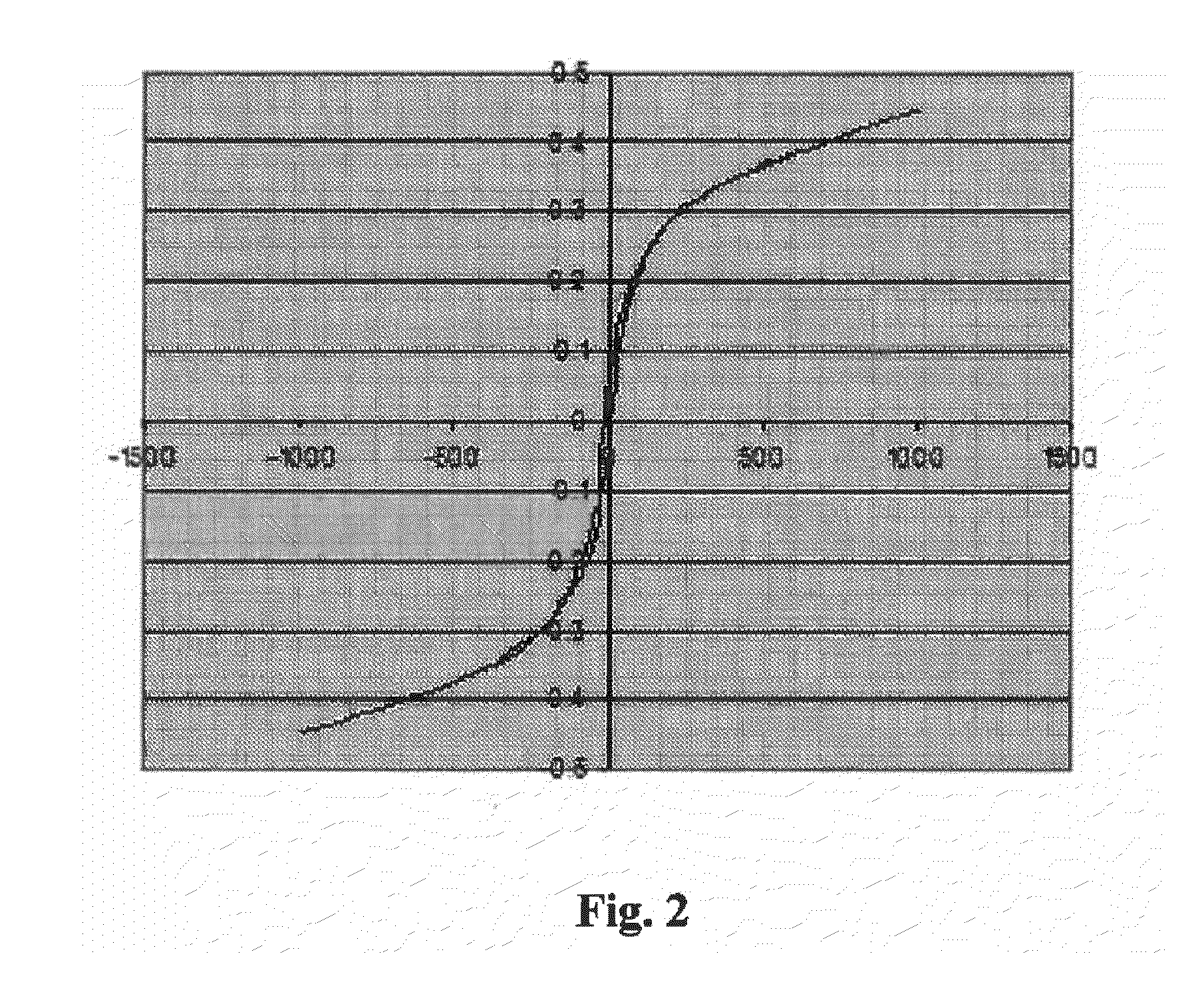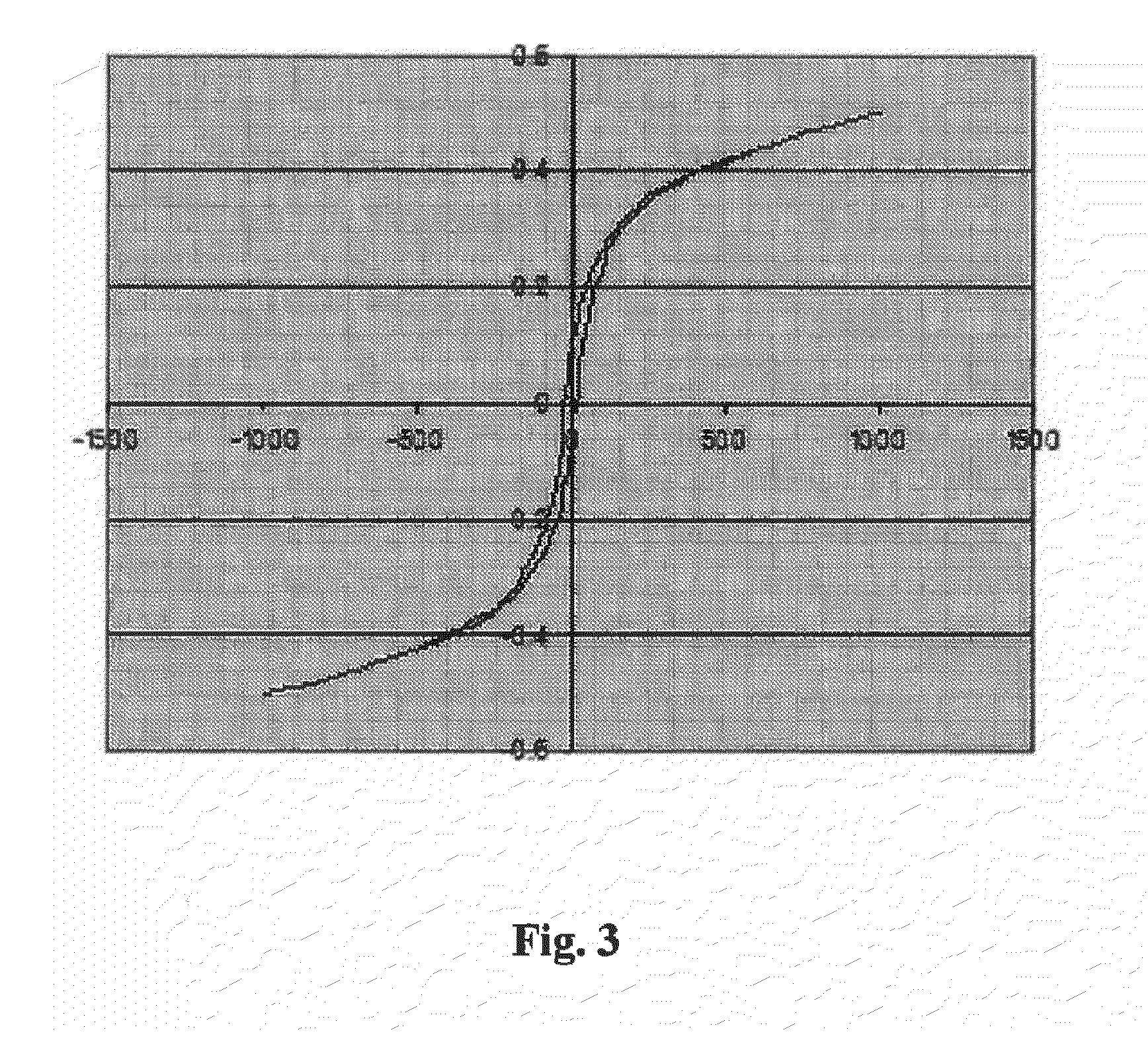Compounds having magnetic functionality, implants or gels derived from same, and use of both in order to determine the enzyme activity of an enzyme
a technology of magnetic functionality and compound, which is applied in the direction of peptides, biological material analysis, biological testing, etc., can solve the problems of inability to follow-up in situ the integration of internal implants or the regeneration of their constituents, and achieve the effect of measurable variation in magnetic properties
- Summary
- Abstract
- Description
- Claims
- Application Information
AI Technical Summary
Benefits of technology
Problems solved by technology
Method used
Image
Examples
example 1
Preparation of a Compound with Magnetic Functionality by Modifications of Collagen with Magnetic Nanoparticles with No Surface Modifications
[0212]Collagen from bovine tendon of commercial type has a triple-helix structure and proven properties as substrate of collagenolytic activity. The selection of collagen fragments with a triple-helix structure can be performed through treatment with pepsin and subsequent filtering. The efficiency of the latter process can be confirmed by circular dichroism.
[0213]To modify this type of collagen first APTES is bound to its lysines. APTES is activated with glutaric anhydride to form a complex. This reaction is performed with N,N-diisopropylethylamine (DIEA). APTES, glutaric anhydride and IDEA, are dissolved in acetonitrile at a ratio of 1:1:3 and placed under agitation for 24 hours in a dry atmosphere. The collagen is dissolved in acid medium with a diffractive such as mannitol and subject to freeze-drying. The freeze-dried collagen is suspended a...
example 2
Preparation of a Compound with Magnetic Functionality In the Manufacture of an Implant
[0216]In this first example APTES is bound to polylysine to then anchor the modified particles. This modified polylysine can be bound to collagen by cross-linking mediated by the lysyl oxidase enzyme. The polylysine is activated with glutaric anhydride prior to binding to APTES. This activation reaction is performed dissolving APTES, glutaric anhydride and N, N-diisopropylethylamine (DIEA) in acetonitrile at a ratio of 1:1:3. Subsequently, stir for 24 hours in a dry environment. Suspend polylysine in acetonitrile, add the resulting mixture to the activated APTES at a 1:1 ratio, together with DIPCD at a 1:1 ratio and mix in a dry environment for other 48 hours. Acetonitrile is replaced by ethanol by evaporation and the excess APTES and other compounds different from modified polylysine are removed by repeated centrifugations and re-suspension in ethanol. Magnetite particles of less than 15 mm in dia...
example 3
Modification of Chondroitin Sulphate Chains with Magnetic Nanoparticles Functionalised with Carboxyl Groups to be Included in Cartilage Implants
[0218]Mix 300 microlitres of APTES, 414 microlitres of DIEA and 16 mg of glutaric anhydride in 200 millilitres of acetonitrile for 24 hours. Add 250 ml of ethanol with a min purity 99%, 2 ml of magnetite particles of 10 nm suspended of acid solution with an approximate iron concentration of 16 mg / ml and 10 ml of solution of NH3 at 30%. Allow the mixture to stir for 3 hours and replace ethanol by acetic acid at pH 2 with two washings. Thus magnetic nanoparticles with a surface partially modified with carboxyl groups are obtained.
[0219]Salts of chondroitin sulphate are dissolved in a 10 mM solution of 4-(2-hydroxyethyl)-1-piperazinotanosulphonic) acid HEPES. Add the magnetite nanoparticles with their surface partially functionalised obtained previously, with an iron concentration about 1 molar from the monomers of chondroitin sulphate, togethe...
PUM
| Property | Measurement | Unit |
|---|---|---|
| Fraction | aaaaa | aaaaa |
| Time | aaaaa | aaaaa |
| Size | aaaaa | aaaaa |
Abstract
Description
Claims
Application Information
 Login to View More
Login to View More - R&D
- Intellectual Property
- Life Sciences
- Materials
- Tech Scout
- Unparalleled Data Quality
- Higher Quality Content
- 60% Fewer Hallucinations
Browse by: Latest US Patents, China's latest patents, Technical Efficacy Thesaurus, Application Domain, Technology Topic, Popular Technical Reports.
© 2025 PatSnap. All rights reserved.Legal|Privacy policy|Modern Slavery Act Transparency Statement|Sitemap|About US| Contact US: help@patsnap.com



